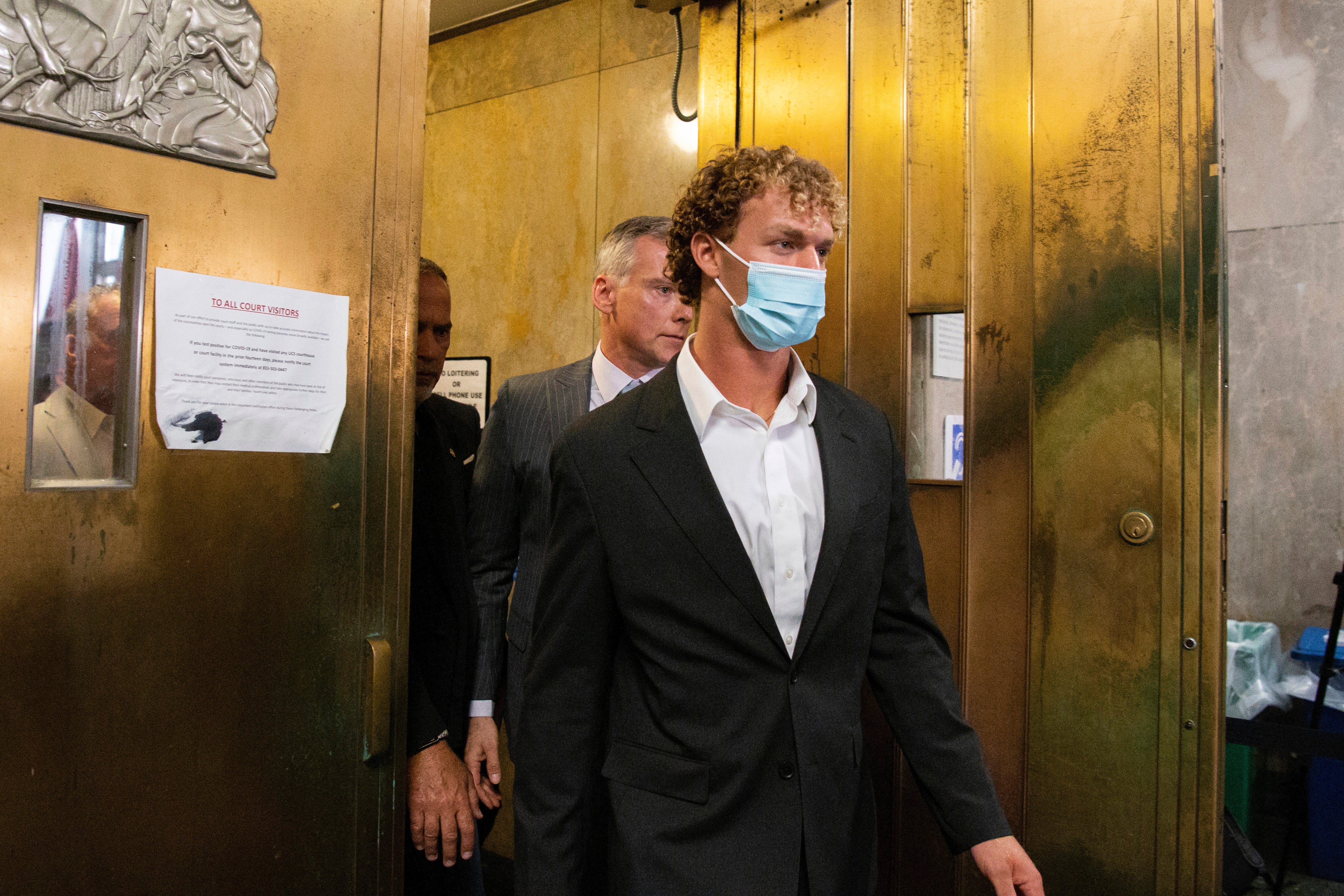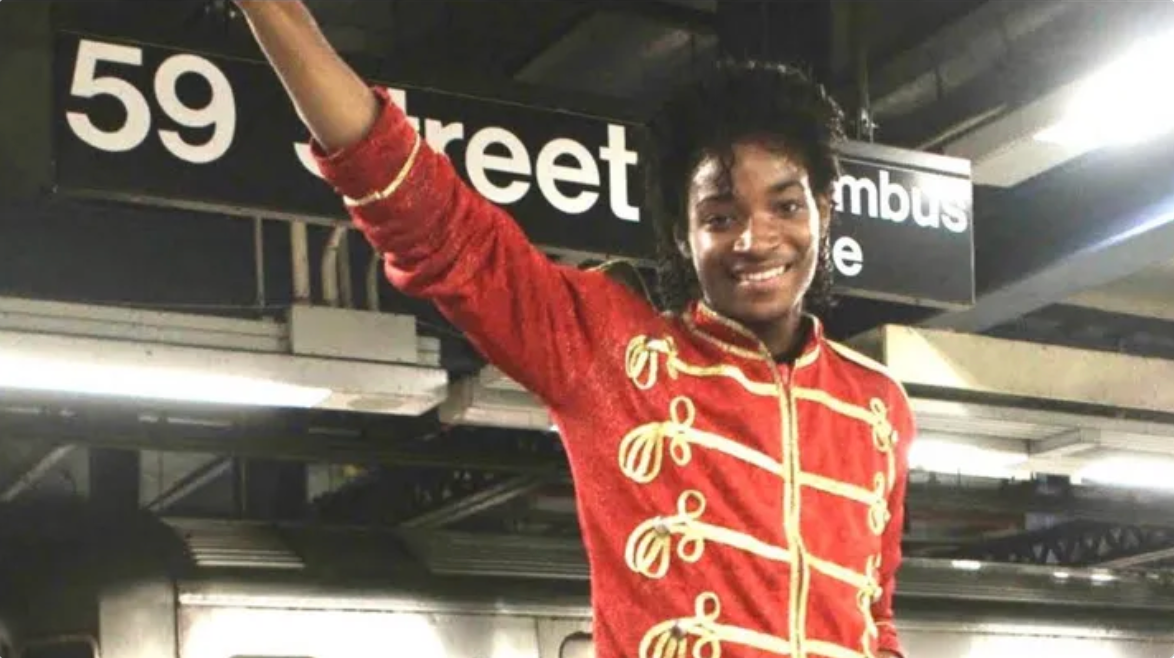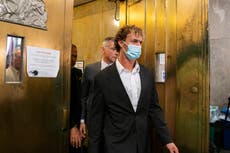How Republicans and right-wing media turned Jordan Neely’s killer into a hero
From the outset of the media spectacle surrounding the case, right-wing lawmakers and commentators have sought to focus Jordan Neely’s death as a failure of Democratic policy around crime while justifying the actions of the man who fatally choked him, writes Alex Woodward


In his upside-down version of the parable, Florida Governor Ron DeSantis compared the man who fatally choked a homeless New Yorker to the “good Samaritan,” the biblical figure who came to the aid of a man who was stripped, beaten and left for dead on the side of the road.
According to witness accounts, Jordan Neely loudly complained of hunger and thirst when he boarded a Manhattan F train on 1 May, said he did not care whether he was jailed or killed, and threw his jacket to the ground before a man identified as Daniel Penny grabbed him from behind and pinned him to the ground in a chokehold for several minutes.
“We stand with Good Samaritans like Daniel Penny,” Mr DeSantis wrote on Twitter after Mr Penny was formally charged with manslaughter on 12 May. “Take back the streets for law abiding citizens,” he wrote.
Republican elected officials and right-leaning media outlets and personalities have similarly described Mr Penny as a heroic figure, and lambasted the fact that charges were brought against him at all, rejecting the idea that prosecutors or law enforcement should even investigate.
Neither attorneys for Mr Penny nor witnesses, law enforcement or New York prosecutors have alleged that Neely physically harmed anyone on the train that day. But the case has underscored the kind of sensational media coverage that depicts New York and other Democratic-led cities as besieged and under threat, and suggests that something must be done to fight back.
Lawmakers and advocacy groups have pointed to Neely’s killing and the apparent attitudes that endorse vigilante violence as the tragic consequences of an epidemic of failed policy and institutional neglect towards the city’s most vulnerable populations.
But from the outset of the media spectacle surrounding the case, right-wing lawmakers and commentators have sought to focus Neely’s death as a failure of Democratic policy around crime while justifying Mr Penny’s actions.
“Penny’s case has been injected into the bloodstream of partisan politics,” Matt Dallek, a professor of political management at George Washington University, told The Washington Post. “A lot of conservatives can point to vigilantes like him and say, ‘They’re standing between us and the mob.’ It fits into a political narrative, and people like Penny are appropriated, whether they want to be or not.”

Neely’s family history, history of mental illness and interactions with the criminal justice system were reported at length following news of his death. Less is known about the 24-year-old former US Marine who placed him in a fatal chokehold. His image and a media narrative surrounding his actions have nearly entirely been projected.
Mr Penny surrended to authorities and was formally charged with second-degree manslaughter on 12 May. He did not enter a plea. He was released on $100,000 bail.
On 14 June, a grand jury voted to indict the former Marine. His arraignment is scheduled for 28 June.
“While we respect the decision of the grand jury to move this case forward to trial, it should be noted that the standard of proof in a grand jury is very low and there has been no finding of wrongdoing,” Steven Raiser and Thomas Kenniff, lawyers for Mr Penny, said in a statement following the indictment. “We’re confident that when a trial jury is tasked with weighing the evidence, they will find Daniel Penny’s actions on that train were fully justified.”
An online fundraising campaign for Mr Penny’s legal defence was launched on the Christian crowdfunding platform GiveSendGo, a website created in response to GoFundMe removing far-right campaigns that violated its terms of service. The fundraiser reached more than $2m within days of its launch, including roughly $600,000 on the day Mr Penny was charged alone.
Several donors – including Kid Rock, far-right streamer Tim Pool, and Republican presidential candidate Vivek Ramaswamy – have contributed huge sums to Mr Penny’s fund, which is run by his attorneys. Mr Ramaswamy donated $10,000.
“Penny is the Subway Good Samaritan and we are lucky to have brave souls like him who are willing to do the right thing,” said Mr Pool, who confirmed his $20,000 donation on 15 May.
“Thank you for protecting the citizens that day,” wrote another donor who contributed $10,000.
“Mr Penny is a hero. Alvin Bragg is a POS,” Kid Rock wrote in a message with his $5,000 donation.
In his message supporting Mr Penny, Mr DeSantis also lashed out at Mr Bragg, the Manhattan prosecutor whose office is overseeing the case.
Republicans have bombarded the New York prosecutor – whose office also is leading a criminal investigation into Donald Trump’s alleged business fraud – with claims of election interference or raised baseless conspiracy theories, including antisemitic and racist attacks, that accuse Mr Bragg of leading a politically motivated case against the 2024 candidate for president while ignoring violent crime.
In April, after Mr Trump was charged with 34 counts of falsifying business records, House Republicans traveled to New York City to hold a hearing to allege Mr Bragg’s“pro-crime” policies threaten public safety.
One of the attorneys representing Mr Penny is Thomas Kenniff, who ran against Mr Bragg in 2021 as a Republican. Mr Bragg received roughly 82 per cent of the vote.
Mr Bragg’s office determined there was probable cause to charge Mr Penny.
“Jordan Neely should still be alive today, and my thoughts continue to be with his family and loved ones as they mourn his loss during this extremely painful time,” Mr Bragg said in a statement after Mr Penny’s court appearance on 12 May.

Attorneys for Mr Penny have stated that he “never intended to harm Mr Neely” and “could not have foreseen his untimely death.” They are “confident that once all the facts and circumstances surrounding this tragic incident are brought to bear, Mr Penny will be fully absolved of any wrongdoing,” according to a statement shared with The Independent.
A fundraiser for Neely’s funeral arrangements organised by his aunt raised more than $132,000.
Witness statements and a description of the scene from the freelance journalist who filmed the widely shared footage of Neely’s final moments are familiar to many people who ride the city’s subway.
Neely entered the Manhattan-bound F train on 1 May yelling that he was hungry and thirsty and said he didn’t care whether he died or went to prison, according to journalist Juan Alberto Vazquez, who described the interaction on his Facebook page along with a video of Mr Penny choking Neely.
“He started screaming all these things, took off his jacket, a black jacket that he had, and threw it on the ground,” he told The New York Post in a story published on 2 May.
Three days later, he told New York magazine’s Curbed that Neely “started yelling that he didn’t have food, that he didn’t have water.”
“From what I understood, he was yelling that he was tired, that he didn’t care about going to jail,” he added. “You ask how many people out of 100 would have dared to do something like that, and I think that 98 will say: ‘No, I would wait to see one more sign that indicates aggression.’”
Assistant District Attorney Joshua Steinglass described the events similarly in a statement in Manhattan Criminal Court on 12 May, following the Manhattan district attorney’s office initial investigation with interviews from witnesses.
“Jordan Neely entered the northbound F train at approximately 2nd Avenue in Manhattan. Several witnesses observed Mr Neely making threats and scaring passengers,” he stated.
“The defendant approached Mr Neely from behind and placed him in a chokehold, taking him down to the ground,” where Mr Penny held him for several minutes after the train reached the Broadway-Lafayette platform, according to the statement. Two other men helped restrain Neely by pinning his arms, and “at some point Mr Neely stopped moving,” Mr Steinglass stated.
Police arrived to find Neely was unresponsive, and he was pronounced dead at a nearby hospital. A medical examiner’s report issued two days after Neely’s death determined his death was a homicide, due to the compression against his neck.
Meanwhile, far-right commentators with large audiences on Elon Musk’s Twitter have sought to justify the killing of Neely on a social media platform that boosts the audience reach of far-right users who pay for “verification”.
Mr Musk has also called protests against Neely’s killing “disingenuous” and he liked a tweet calling Neely “worthless.”
Mike Cernovich called Neely a “psychopath who terrorized subway passengers.” US Rep Marjorie Taylor Greene called him “a violent criminal who should have been behind bars.” Her post was liked by Musk, who also liked a Twitter poll from another user asking “Did Jordan Neely deserve what happened to him?”
More than two-thirds of those who voted in the poll believed “Yes, he had it coming.”
US Rep Matt Gaetz of Florida called Mr Penny a “Subway Superman.”
“The mob will relentlessly come after the marine who subdued Neely till his life is ruined, he’s killed or behind bars for life,” according to far-right pundit Tomi Lahren. “All for trying to protect his fellow passengers. We often see this exact kind of story where a violent vagrant beats, assaults, or rapes an innocent person, as onlookers do nothing..and we wonder why?”
On his broadcast, The Daily Wire’s Michael Knowles said Mr Penny “should get an award for valor” and “a key to the city.” One America News host Dan Ball accused the media, Black Lives Matter, and “the antifa crowd” of “hyping it up to be George Floyd 2.0.”
During a YouTube brodcast, Steven Crowder stated that “Jordan Neely forfeited his right to live.”
Fox News host Greg Gutfeld described the manslaughter charges against Mr Penny as “pro-criminal” and “anti-hero”. Earlier this month, Fox News host Jesse Watters stated, without evidence, that Mr Penny confronted Neely “gently at first” and that Mr Penny “tried to de-escalate”, claims that have not been substantiated.
The absence of clear facts and evidence in a breaking news cycle is often filled with rampant speculation and narrative. In the Neely case, outlets relied on law enforcement sources citing his alleged criminal record and alleged threats towards other subway passengers while witnesses said the opposite.
“It did not appear that this man, who seemed to be suffering from some kind of mental disturbance, was seeking to assault anyone,” according to a witness speaking to CBS News.
The New York Post initially described Neely as “unhinged” and had “numerous prior arrests for offenses including assault, disorderly conduct, and fare beating,” citing unnamed law enforcement sources.
A few days later, an audience member in Sean Hannity’s audience cheered at the mention of the man who choked Neely, while Hannity – whose programme played a clip of Mr Penny choking Neely – said he was “making violent threats, acting erratically, a mentally ill homeless guy with a long history of violent crime” before telling his audience that he was killed.
One key detail that was later removed from a report from ABC7 stated that detectives did not have “information suggesting that the veteran who administered the hold had been warned by onlookers that Neely was dying or suffering serious physical damage.” In the video from Mr Vazquez, a man can be heard repeatedly warning the men that his wife was in the military and that placing Neely in a chokehold could be fatal.
“You don’t want to catch a murder charge,” the man can be heard saying. “You got a hell of a chokehold, man.”
This story was first published on 15 May and has been updated with developments





Bookmark popover
Removed from bookmarks